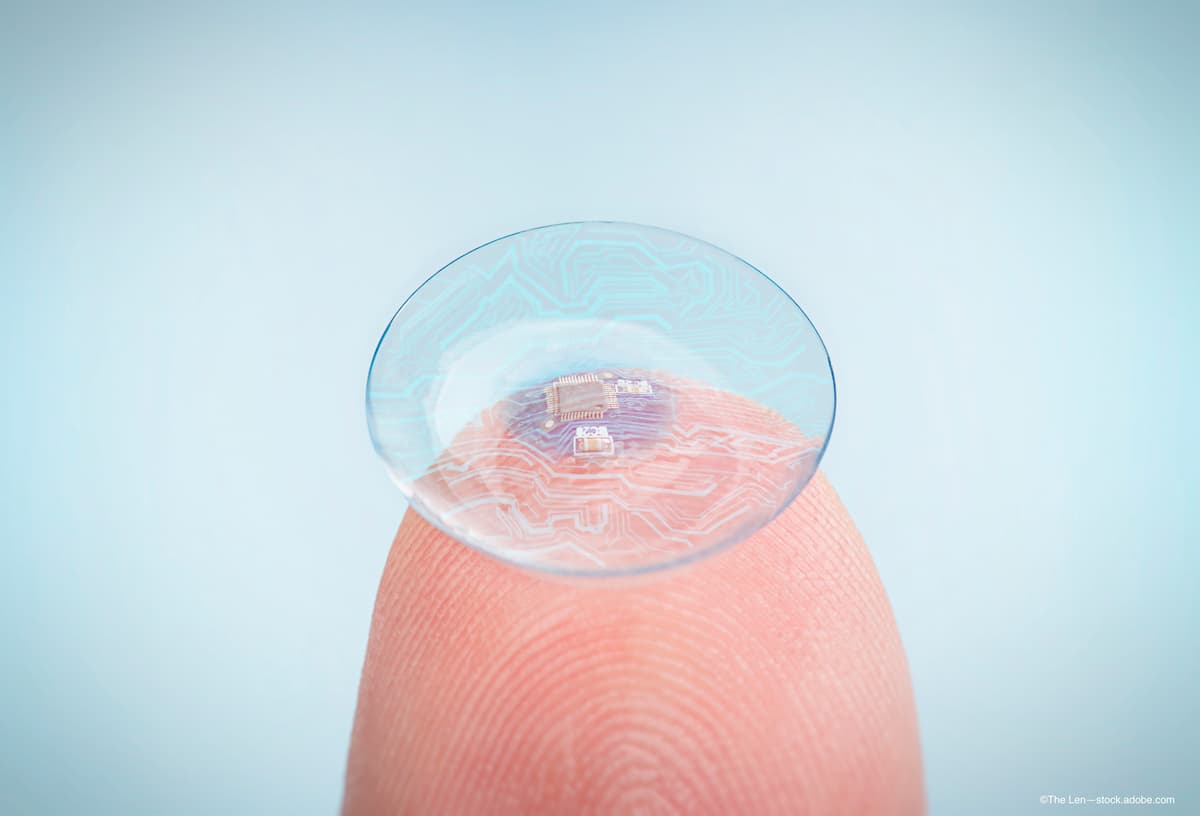Azalea Vision announces first on-eye test of its smart contact lens prototype
The smart contact lens is designed to offer a non-invasive solution for patients suffering from keratoconus, corneal irregularities, photophobia, and presbyopia.
(Image credit: Adobe Stock / The Len)

Azalea Vision announced the demonstration of its ALMA Lens, the first functional prototype of the Azalea smart contact lens platform. According to the Azalea Vision, the lens is designed to offer a non-surgical solution for patients suffering from keratoconus, corneal irregularities, photophobia, and presbyopia.1
“This test marks a pivotal moment in the pursuit of non-invasive treatment options for challenging ophthalmological conditions,” said Andrés Vásquez Quintero, co-founder and CTO of Azalea vision, who also wore the device.
The company also noted in its release the lens includes an embedded diaphragm, the aperture of which can be modulated to filter the amount of light which enters the eye. The design integrates liquid-crystal technology, a microchip, an RF antenna, a medical grade micro-battery, and a configurable light control.1
Moreover, the company explained this smart lens is designed to be easy to use and program, by patients and physicians, allowing for personalized therapy and it is designed to significantly enhance visual acuity without the need of surgery.
Azalea noted in the release its first application will focus on helping patients with irregular astigmatism due to keratoconus and other corneal irregularities. By filtering out peripheral light, the smart lens is designed to allow only focused light to reach the retina.
This first application could offer treatment for nearly half a million patients in the EU and USA alone, representing a total addressable market of more than 2 billion euros per year, as it is a renewable market. Neither glasses nor contact lenses currently available on the market can fully resolve the severe visual distortions that Azalea Vision’s ALMA Lens is designed to address.1
Rudy Nuijts, MMA, professor of Medicine and Ophthalmology at University Eye Clinic Maastrich,was pleased to learn of the results.
“In our hospital we treat a lot of patients with severe irregular astigmatism. Patients with corneal irregularities could profit from a non-surgical solution that is designed to filter the aberrated light to recuperate their visual acuity and visual quality,” he said in the news release.
The lens also could benefit patients diagnosed with presbyopia, as its small aperture optics principle could increase patients’ depth of focus and correct refractive errors. The technology could also aid patients with iris disorders, severe light sensitivity due to chronic migraine or dry eye syndrome, as it is designed to diminish the amount of light reaching their eyes.
Enrique Vega, CEO of Azalea Vision, said the success of the company’s prototype highlights his team’s spirit of innovation.
“We’re not just developing a new product category in the medical device sector; we’re pioneering a platform with diverse and groundbreaking applications,” he concluded in the news release.
Based in Belgiulm and founded in July 2021, Azalea Vision is a spin-off from imec and Ghent University and has received support from VLAIO, as well as from MedTech and DeepTech investors that include imec.xpand, Elaia Partners, Sensinnovat, and Shigeru.
Reference
Azalea Vision announces first on-eye test of Alma, its revolutionary smart contact lens. Azalea Vision. Published December 5, 2023. Accessed December 5, 2023. https://azaleavision.com/alma-lens-the-revolutionary-smart-contactlens-by-azalea-vision-promises-new-hope-forpatients-with-vision-disorders
Newsletter
Want more insights like this? Subscribe to Optometry Times and get clinical pearls and practice tips delivered straight to your inbox.